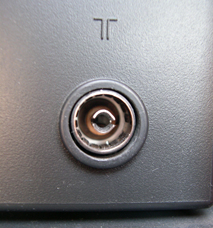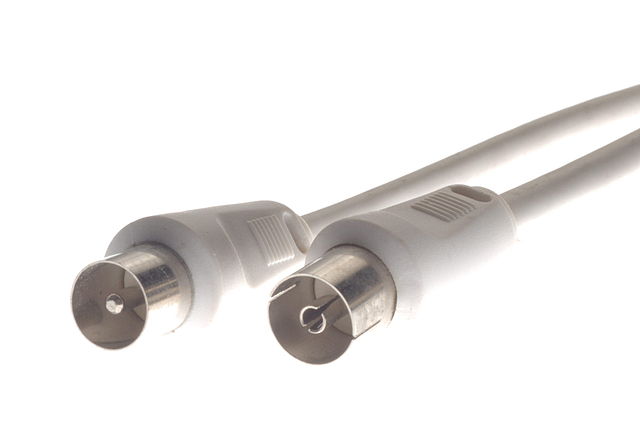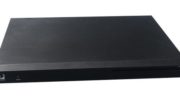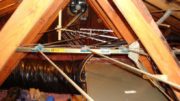This connector is pretty rare in the US, but you might still see it. Its correct name is a “Belling-Lee connector,” but of course no one calls it that. In countries where it’s in common use, it’s referred to as a PAL connector, an IEC connector, or just an aerial connector. Here in the US you probably call it “that funny plug on the back of my audio receiver.” Let’s look a little deeper into it.
Where is it used?
The IEC Connector is generally attached to antenna cables. In most cases, it has a male connector on one side and a female on the other, making it easy to extend cables without the use of a barrel connector like we use here in the US. This means that you can extend an antenna signal more easily and with less loss.
The IEC connector works well for over-the-air antenna frequencies but does not do as well for satellite frequencies. The F-connector, with its thicker outer connection, screw threads, and direct connection between the center conductor and the opposite connector, is a much better choice for the higher frequencies needed by satellite TV cables.
History of the connector
Sources say that the connector was first devised by a company called “Belling and Lee, LTD” in or around 1922, when Great Britain first started radio broadcasts. It features a robust center plug with a push-on fitting that fully shields the plug inside from outside radiation, which makes it ideal for over-the-air applications of many kinds. The connector was later standardized by the International Electrotechnical Commission, a Swiss consortium that was standardizing just about everything in Europe just like the US’s own IEEE was doing here. They saddled it with the ungainly name, “IEC 61169-2 radio-frequency coaxial connector of type 9,52.” This being the only IEC-standard connector many people used, the term “IEC Connector” became common usage.
Why we sometimes call it a PAL connector
For most of the 20th century, the world of television broadcasting was split into three camps. Americans and much of the West used a system called “NTSC.” France and countries aligned with it used a completely different system called “SECAM.” Pretty much everyone else used a system called “PAL.” PAL was technically the superior one of the three, with about 16% better quality than NTSC. Of course, all three standards disappeared when digital broadcasting dawned in the 21st century, but the long period in which people throughout Europe connected their TVs with Belling-Lee connectors led to its being termed a “PAL Connector.”
Here’s why you might care
For the most part, Americans don’t get to see IEC connectors. The one exception you’ll find is the case of audio receivers. For some reason, many audio receivers use an IEC connector for their FM antenna input. You might see something like this:

and that’s an IEC female connection. There are several theories to why companies like Yamaha and Denon would use this connector instead of a female “F” connector like pretty much everything else. Some folks think it’s because these companies just don’t make TVs or other consumer electronics and therefore somehow don’t know that Americans use the F connector while other countries don’t. I think that’s poppycock. Manufacturers need to do so many other customizations for the US market and even if it’s true they would have fixed that decades ago.
No, I think the more likely explanation is that the IEC connector can sink into the inside of the box, reducing the overall depth (or allowing the receiver itself to be deeper and still fit in a rack. A female F connector would require precious space at the back of the receiver and then you have to realize that almost all F connections are straight runs from fairly thick cable. All told you could lose 1-2 inches of precious depth there. I admit even that is a thin explanation but I have to admit I don’t understand how devices come to the US with IEC connectors.
Find PAL connectors and other accessories at Solid Signal
Solid Signal is your home for all the connectors and accessories you need! Shop our great selection and you’ll see plenty of hard-to-find parts! We have cables and adapters for older equipment too. It’s stuff you won’t see on the bigger web sites. Here’s something else you won’t see on bigger web sites: a phone number. That’s right. Have you ever tried to call customer service on the world’s biggest e-commerce web site? You can’t. They don’t publish their number.
We at Solid Signal do publish ours. Call 888-233-7563 during East Coast business hours. We have real qualified techs on the end of the phone. We don’t believe in overseas call centers, either. For us it’s all about real customer service. Call and you’ll get a trained expert, not a script reader. Give us a try! Call, or if it’s after hours fill out the form below. We’ll get back to you quickly!





